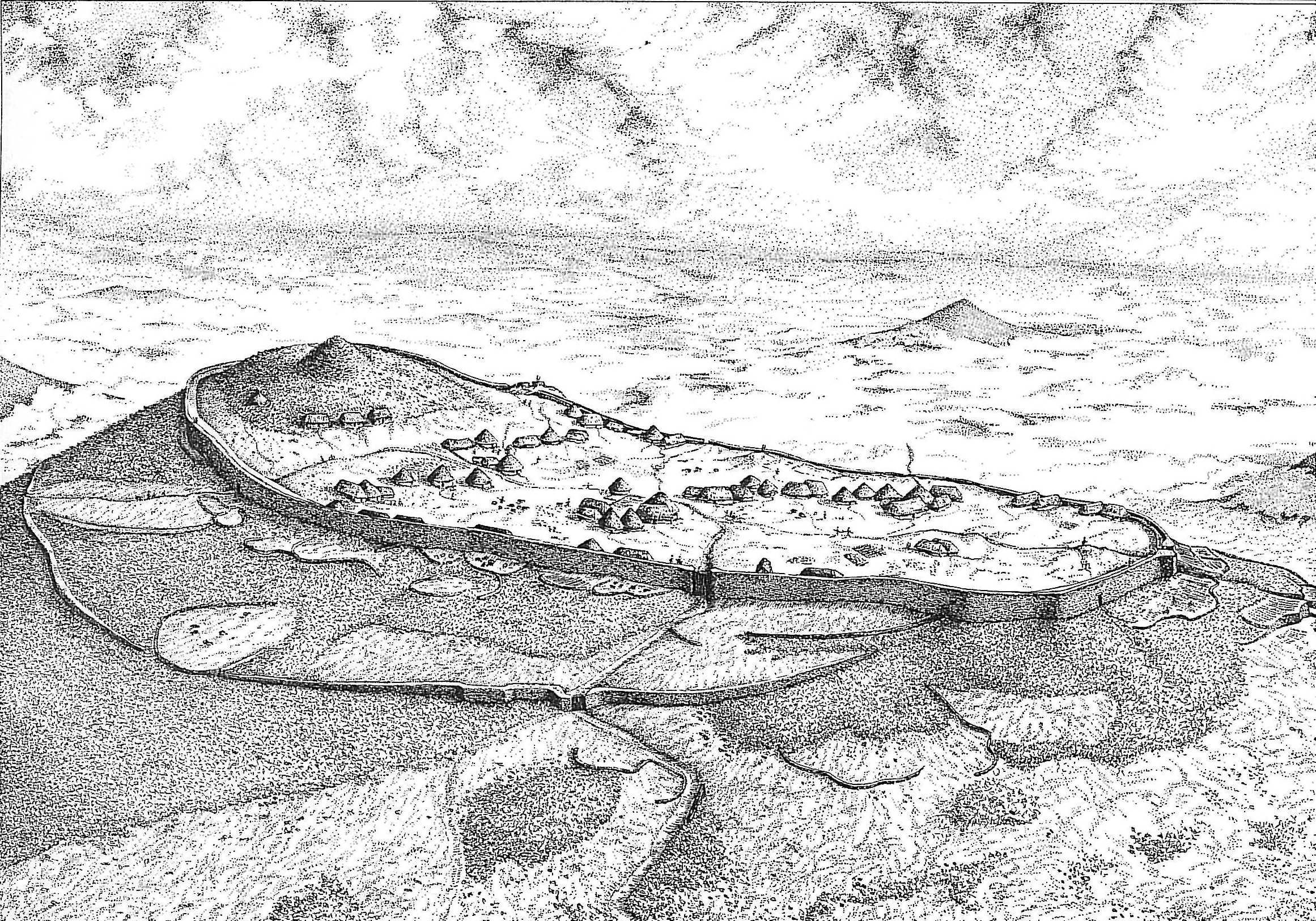Tre’r Ceiri Summit
The special thing about Tre’r Ceiri is the huge stone wall surrounding the fort, and that the huts and the buildings inside the fort are in such remarkably good condition. Standing at the summit, looking down over the fort, one can see the clear plan of the huts within the fort. The bridlepaths surrounding the fort are in relatively good condition if you’re an experienced walker.
 The cairn at the top of Tre'r Ceiri
The cairn at the top of Tre'r Ceiri
The vast outer round wall surrounding Tre’r Ceiri was built from dry stone varying in thickness from 6 foot to 15 foot in places. The outer wall is as high as 3 foot in places. There was a walkway on top of the wall, which was very similar to the ones seen in medieval castles, so ‘soldiers’ could walk on top of the wall, keeping a lookout or carrying out defensive duties.
 An artist's idea of Tre'r Ceiri
An artist's idea of Tre'r Ceiri
Within the outer wall there are roughly 150 huts, most of them clustered into distinct groups. The round houses are where people lived, and some are split, maybe due to repurposing in a later period in Roman times. Dave Hopewell (Gwynedd Archaeological Trust), has certainly shown that some occurrences where they split the roundhouses were created against the walls of huts that were long since dilapidated, again, suggesting that Tre’r Ceiri was repurposed after being abandoned. The workshops and storehouses would be rectangular in shape.
 Looking up at the cairn
Looking up at the cairn
On the summit itself is a cairn of stones dating from the Bronze Age, sometime during the second millennium B.C. and the likelihood is that this signifies someone's grave. Similar cairns can be found at other sites, the summit of Rhiw Mountain in their midst, so the implication is that these mountains have been sites of importance, and perhaps of spiritual importance to people for centuries before the hillforts were built. A good question, of course, is whether the builders of the hillfort were aware of the importance of the cairn − but the fact that the cairn survived suggests that Iron Age residents respected it and refrained from reusing the stones to build their roundhouses.